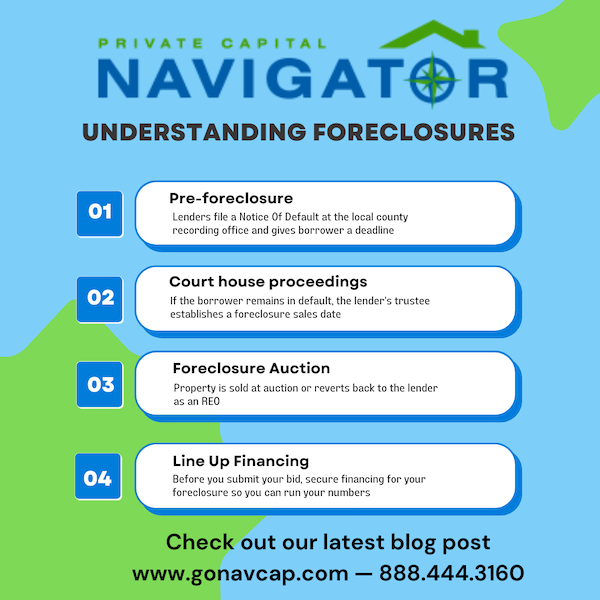Foreclosures Are A Hot 🔥Commodity
A neglected fixer-upper in a solid neighborhood is a real estate investor’s holy grail. But, these days, it’s increasingly difficult to find a property like this.
A recent ATTOM report showed that total foreclosure rates decreased 10 percent from 2023 to 2024. It’s a very small piece of the pie. In fact, foreclosure filings in 2024 represented only 0.23 percent of all U.S. housing units, down slightly from 0.25 percent in 2023,
With few foreclosures available, it makes sense to position yourself and your bid to succeed. That starts with understanding the process and, hopefully, avoiding the pitfalls.
So how do foreclosures come about?
In a nutshell, foreclosures occur when homeowners stop paying their monthly mortgage. Most lenders will file foreclosure paperwork once payments are three to six months past due. By filing a Notice of Default at the local county recording office, lenders notify the borrowers that they are at risk of foreclosure. Borrowers then have a certain time period (usually 3 months) to correct the default and avoid foreclosure.
The First Step: Pre-Foreclosure
During those three months, the home is in what’s called pre-foreclosure, and it’s a good time for real estate investors to try to negotiate a deal directly with the likely motivated sellers. As you can well imagine, the prospect of being forcibly removed from your home is a scenario most sellers would like to avoid.
How to find a pre-foreclosure? You might try some bandit signs offering cash for deals in order to offer a less painful exit strategy to homeowners in financial distress. You may also find pre-foreclosure and foreclosure listings on various websites such as foreclosure.com.
Next Stop: The Courthouse Steps
If the borrowers don’t correct the default within the specified time period, the lender’s trustee establishes a foreclosure sale date and a Notice of Sale will be posted on the property and in the local newspaper. So consider a subscription to your local paper to stay in the know.
On the sales date, bidders may gather on the county courthouse steps literally or, sometimes, figuratively, to submit bids. The lender sets the opening bid which is usually equal to the outstanding loan balance plus interest accrued and any fees associated with the sale.
This process is not for the faint of heart, however. The property is sold ‘as-is’ with no opportunity for inspection or appraisal and may be subject to liens. Bids are made in cash, usually with an upfront deposit, and the remaining funds are required within 24 hours. The highest bidder at the auction wins the prize—the trustee’s deed to the property.
Last Stage: Foreclosure
What if there are no bidders at the auction or, at least, none willing to meet the opening bid? In that case, the property reverts back to the lender and is deemed an REO or real-estate-owned property. To find properties at this stage in the game, it often pays to find a real estate agent who specializes in REOs and may already have direct relationships with local lenders. By partnering with an agent who is ‘in the know’, you may be able to uncover a hidden gem before it even hits the websites we mentioned above.
Don’t Forget About Financing
If you are lucky enough to find a sweet deal, lining up your financing ahead of time will make your bid much more competitive. After all, the lender holding the property wants to unload it sooner rather than later. Banks are not in the real estate business for a reason! So, they are looking for serious bidders who have done their homework.
Here at Navigator Private Capital, we want our borrowers to succeed and work hard to make the process as seamless as possible. We have automated much of the loan approval process and can provide you with a conditional approval letter for your deal within days.
Click the link below to get a free quote on your next project whether it’s fix-and-flip, DSCR, new construction, or bridge.

